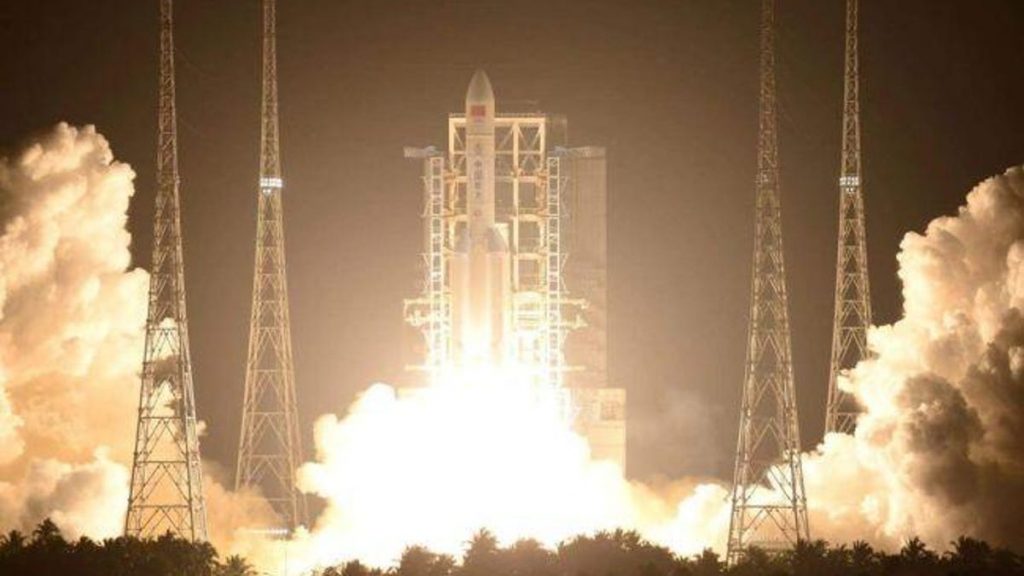A Chinese rocket booster made an out-of-control reentry into Earth’s atmosphere over the water early Friday, the US military’s Space Command confirmed.
The booster is the first stage of a Long March 5B rocket that several days ago sent a large module to orbit to expand China’s Tiangong space station.
«The People’s Republic of China Long March 5B #CZ5B rocket reentered the atmosphere over the south-central Pacific Ocean at 4:01 a.m. MDT/10:01 UTC on 11/4,» the US Space Command tweeted Friday.
The Long March 5B weighs over 20 metric tons, measures 10 stories tall and appears to lack the hardware to make a controlled reentry and steer itself toward a safe, planned splashdown.
Instead, the Chinese space program rolled the dice that what remained of the rocket, after much of it burned up in the atmosphere, would land somewhere on the majority of the planet’s surface that is either unpopulated or covered by ocean.
It seems the gamble worked out this time, but in the process the dramatic descent caused a 40-minute closure of a significant portion of Spanish airspace, causing delays to around 300 flights, according to the Reuters news agency. It also potentially littered debris over an area in Mexico.
Jonathan McDowell, Harvard astronomer and leading expert on all things orbital, noted that the hunk of space junk likely broke apart as it was speeding over the Pacific in the direction of Mexico and that some of the debris may have made it ashore.
There have been no reports of debris on the ground just yet.
If the rocket broke up over the Pacific, why was there was concern on the other side of the world in Spain? It’s because the exact point of reentry is hard to predict. The errant object is traveling at thousands of miles per hour as it collides with the atmosphere and begins to slow down while burning up and being shredded by the friction.
The rocket remnant appears to have passed through Spain’s airspace without incident and broke up 40 minutes later — far, far away.
«The uncertainty of where the large debris will ultimately land presents a level of risk to human safety and property damage that is well above commonly accepted thresholds,» the Aerospace Corporation, which tracks reentries, wrote in a statement.
The rocket was used to send Mengtian, the third and final section of Tiangong, to orbit for installation on a launch that took place Monday.
Similar reentry risks were seen with the launch of the previous two Tiangong space station modules as well. A spent rocket landed in the Indian Ocean on May 8, 2021, and another broke up over Malaysia, Indonesia and the Philippines on July 30, 2022. In 2020, a Long March 5B mission also led to debris falling on western Africa.
Falling space junk has damaged property, but there has never been a report of human injuries or death. Earth’s population distribution makes it most likely any trash making it all the way from orbit to the surface ends up either in the ocean or someplace remote (rural Australia seems popular).
